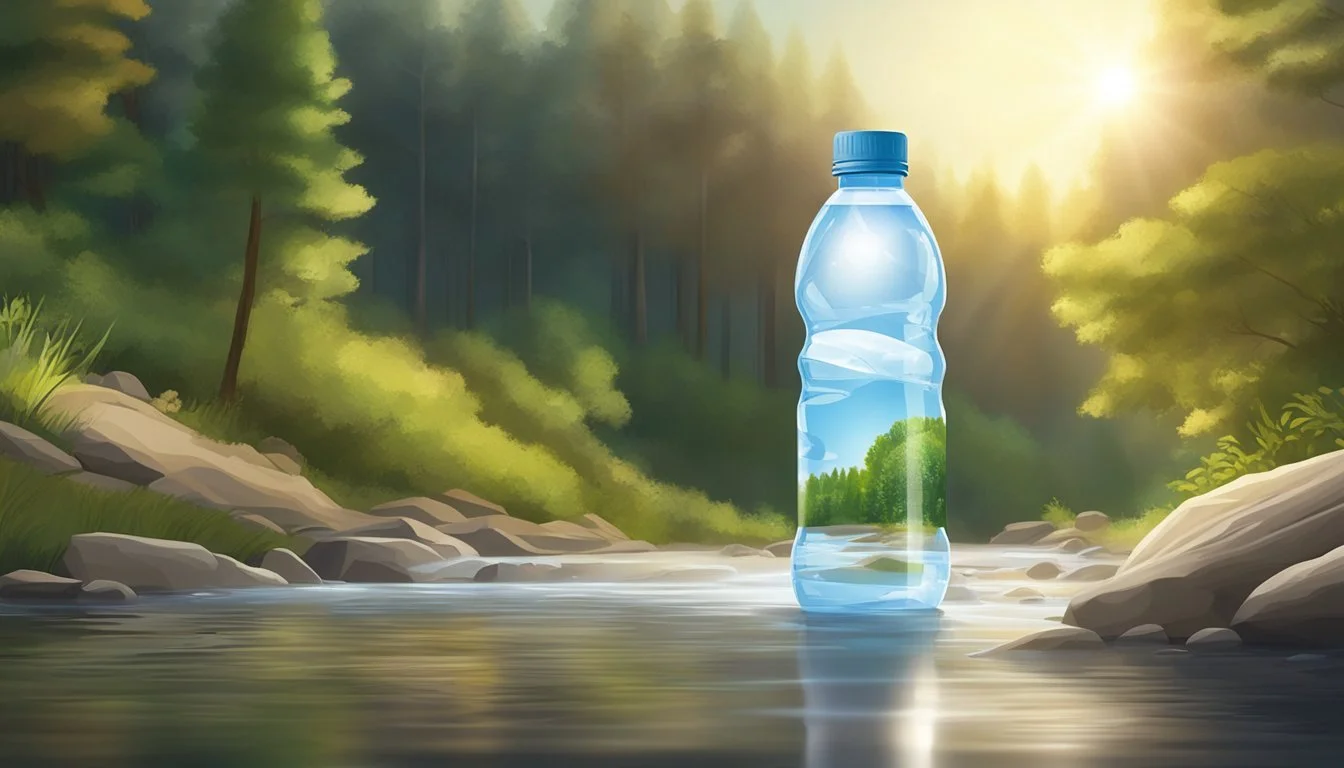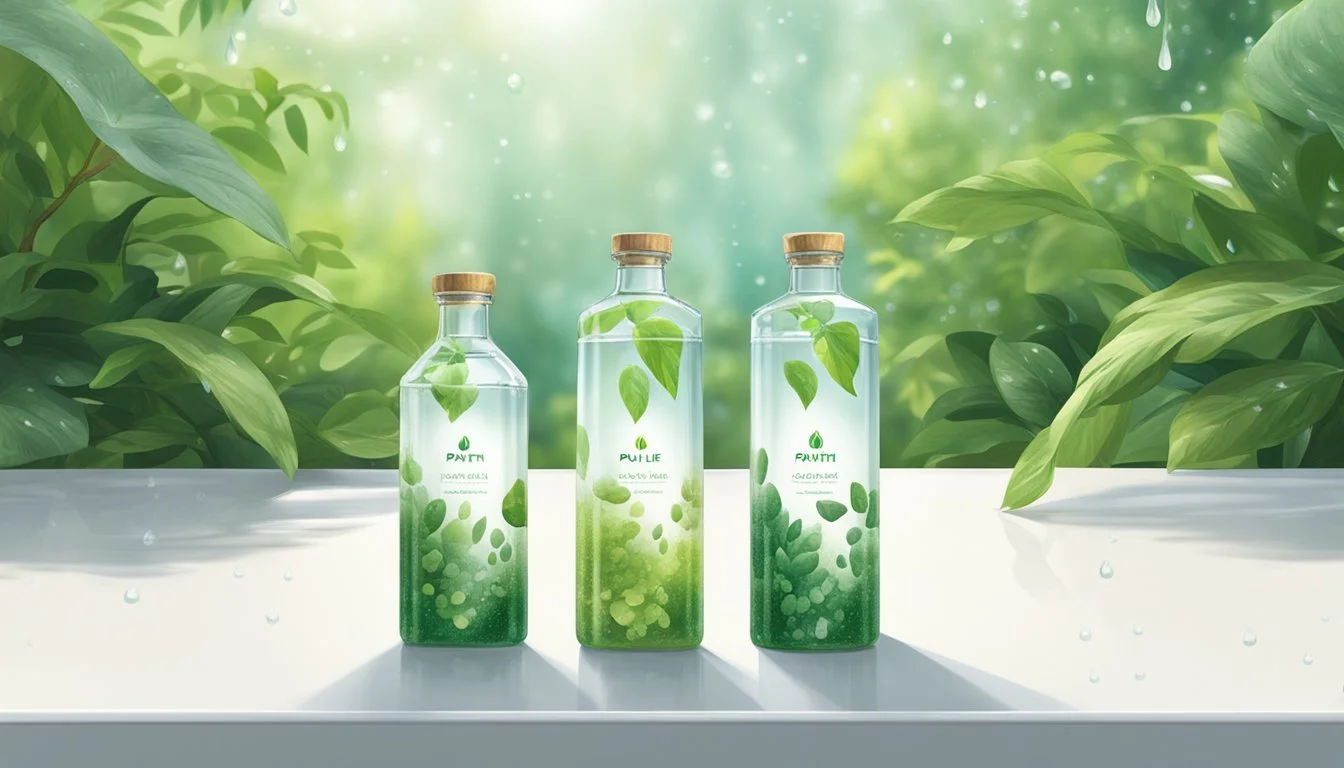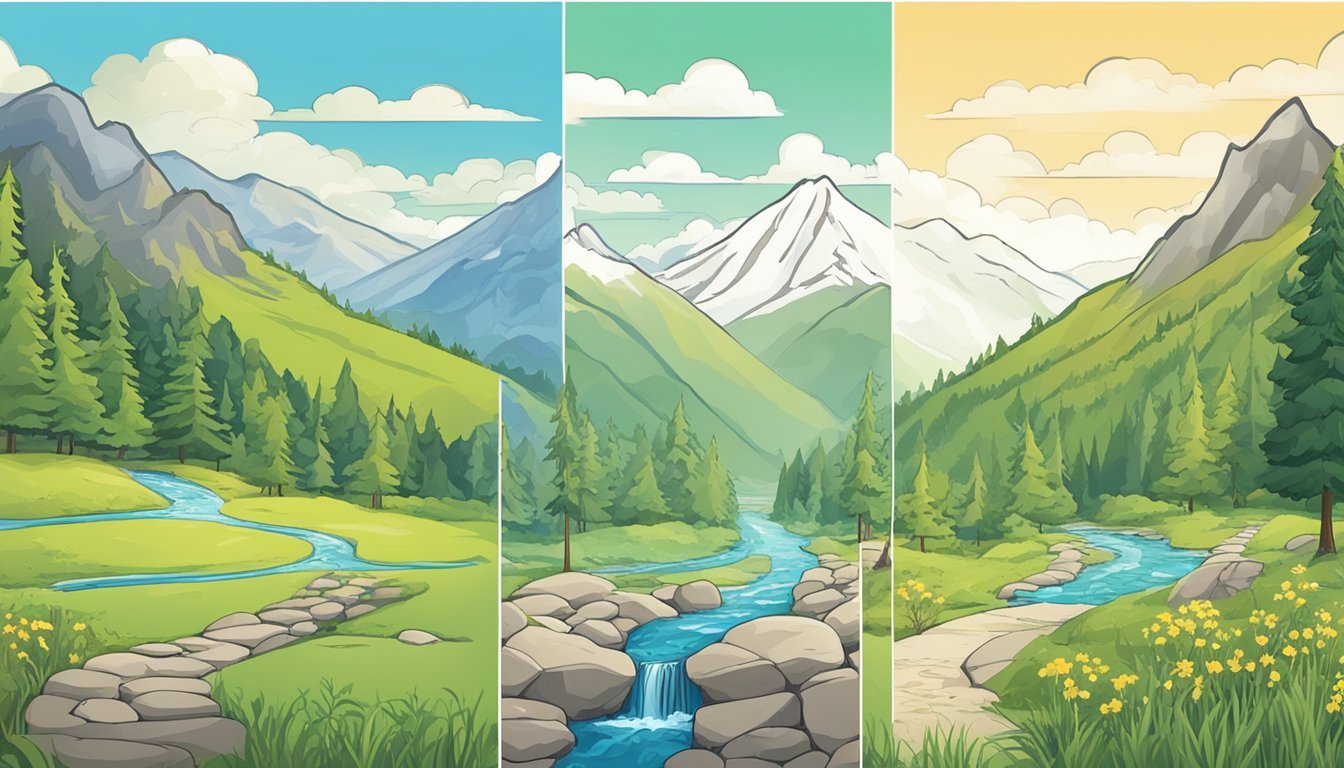Path vs. Pure Life
Comparing Top Bottled Water Brands
Choosing the right bottled water can feel overwhelming with so many options available. Path and Pure Life are two popular brands that many consumers turn to, but which one stands out in terms of taste, quality, and health benefits? Path offers a more premium experience with its emphasis on sustainable packaging and superior taste, while Pure Life provides a reliable, everyday option with wide availability.
Path focuses on delivering high-quality water, often sourced from natural springs, and packaged in eco-friendly, reusable bottles. This makes it an attractive choice for those who prioritize both taste and environmental impact. Pure Life, on the other hand, is known for its affordability and widespread availability, making it an easy choice for everyday hydration.
When comparing the two, it’s clear each brand has its own strengths. Taste and quality might lead you towards Path, while convenience and cost-effectiveness could make Pure Life your go-to bottled water. This article will explore these aspects in more detail to help you make an informed choice.
Bottled Water Overview
Bottled water comes in a variety of forms, each with specific processes and sources. It's important to understand these differences when evaluating products like Path and Pure Life.
Defining Bottled Water
Bottled water includes several types such as spring water, purified water, and natural spring water. Spring water is sourced from natural springs and retains its mineral content. Purified water undergoes treatments like reverse osmosis or distillation to remove impurities. The mineral content in these waters can vary significantly.
The production process plays a crucial role. Nestlé Pure Life, for example, emphasizes extensive distillation and quality assurance, ensuring clean and safe water.
Bottled Water vs. Tap Water
Tap water is generally sourced from rivers, lakes, and reservoirs. It is treated with chemicals to make it safe for drinking. Bottled water often promises higher purity and better taste.
Bottled water brands undergo different filtration and purification processes compared to tap water. While tap water might contain chlorine or fluoride, bottled water brands like Path and Pure Life focus on maintaining a clean taste free of such additives.
It's also worth noting the convenience factor. Bottled water offers portability, making it a preferred choice for on-the-go hydration. However, the environmental impact due to plastic waste is a crucial consideration.
Comparative Analysis: Path vs. Pure Life
Both Path and Pure Life offer distinct qualities in their bottled waters, addressing factors like brand history, water source, filtration processes, and taste profiles.
Brand Histories and Market Position
Path: A relative newcomer in the bottled water market, Path is known for its eco-friendly approach. Their reusable aluminum bottles emphasize sustainability, making them attractive to environmentally conscious consumers.
Pure Life: Owned by Nestlé, Pure Life has established itself as one of the largest bottled water brands globally. Known for its affordability and wide distribution, Pure Life has a significant market presence and a strong reputation.
Water Source and Origin
Path: Path sources its water from natural springs. This water is naturally filtered through volcanic rock and permeable layers, contributing to its purity.
Pure Life: Unlike Path, Pure Life sources its water from both municipal supplies and natural springs. The origin varies based on the production facility, ensuring a blend of accessibility and quality.
Filtration and Purification Processes
Path: The water from Path undergoes minimal processing due to its natural filtration through volcanic rock. This preserves the mineral content and maintains the inherent purity of the spring water.
Pure Life: Pure Life employs a multi-step filtration process that includes carbon filtering and reverse osmosis. This method ensures the removal of impurities and enhances the water's overall taste and clarity.
Taste Profile Examination
Path: The use of natural spring sources gives Path water a clean, crisp taste. The natural filtering through volcanic rock contributes to a subtle yet distinct mineral flavor that many find refreshing.
Pure Life: Pure Life water is often described as reliable with a neutral taste. Some consumers note a slight tang, but it does not overpower the experience. The extensive filtration process aims to provide a consistently pleasant taste free from off-putting flavors.
Health and Quality Considerations
When comparing Path and Nestlé Pure Life, it is crucial to evaluate their health impacts and quality. Focus areas include the types and amounts of minerals and electrolytes, pH levels and potential contaminants, and adherence to regulatory standards.
Mineral and Electrolyte Content
Minerals and electrolytes play a significant role in maintaining bodily functions. Path water often promotes its enhanced electrolyte content aimed at hydration and performance. These electrolytes, such as sodium, potassium, and magnesium, can support muscle and nerve function.
Nestlé Pure Life also contains added minerals for taste. This brand typically includes calcium, magnesium, and potassium. The specific levels of these minerals may vary slightly based on the bottling source. Both brands aim to offer balanced mineral content, though the taste differences can be noticeable due to their distinct mineral profiles.
PH Levels and Contaminants
pH levels can influence how water impacts body balance. Alkaline water claims a higher pH, suggesting benefits for neutralizing acidity in the body. Path water is often marketed with a stable pH that supports these claims, purported to enhance hydration.
Nestlé Pure Life maintains a neutral pH, closer to that of regular tap water. Contaminants are a critical factor; past studies indicate the presence of various contaminants in many bottled waters, including tap water-derived brands. Both Path and Pure Life undergo stringent filtration and purification. However, vigilance for contaminants like PFAS chemicals, heavy metals (lead, arsenic, cadmium), or plastic-derived chemicals remains necessary.
Regulatory Standards and Compliance
Adherence to regulatory standards ensures the safety and quality of bottled water. Path water complies with FDA and EPA standards, ensuring it meets safety criteria. Independent certifications, like NSF International, further validate the safety of its products.
Nestlé Pure Life is similarly regulated and frequently tested to comply with national and international standards. Regular assessments focus on microbial, chemical, and radiological safety. Both brands aim to meet or exceed these standards, ensuring consumer confidence through robust compliance measures.
Maintaining high standards is critical for both health and trust, and both Path and Pure Life strive to achieve this. The transparency in reporting and adherence to regulations by both brands help secure their position in the competitive bottled water market.
Consumer Experience
When comparing Path and Pure Life, it's important to consider how branding, accessibility, and price influence consumer choices. Each of these factors shapes how customers perceive and engage with these water brands.
Branding and Marketing
Path positions itself as a premium brand with a strong focus on sustainability and reducing plastic waste. Their marketing often highlights the use of reusable aluminum bottles, appealing to environmentally conscious consumers.
Pure Life, on the other hand, emphasizes widespread availability and trustworthiness. Owned by Nestlé, the brand uses its global presence to assure customers of its quality. Pure Life's marketing often focuses on family-friendly imagery and traditional values.
Accessibility and Global Reach
Path is primarily available in select markets and online, targeting niche consumers who are willing to pay more for eco-friendly packaging. This limited distribution can make it harder for average consumers to find Path in local stores.
Pure Life benefits from Nestlé's extensive global distribution network. It is widely available in supermarkets, convenience stores, and vending machines across many countries. This makes Pure Life a convenient choice for consumers looking for easy access to bottled water.
Price Comparison
Path is generally priced higher due to its sustainable packaging and premium positioning. Customers pay a premium for the reusable bottles and the brand’s environmental commitment, making it one of the more expensive water options on the market.
Pure Life offers a more budget-friendly alternative. Despite being backed by a major corporation, it is competitively priced, making it attractive to price-sensitive consumers. The cost-effectiveness of Pure Life aligns with its goal of being a widely accessible water brand for everyday use.
These factors collectively influence how consumers experience Path and Pure Life, impacting their buying decisions and brand loyalty.
Innovations and Trends
In the bottled water market, brands are pushing the boundaries with enhanced and flavored water variants and embracing cutting-edge filtration technologies. These innovations not only aim to improve taste and quality but also cater to diverse consumer preferences.
Enhanced and Flavored Water Variants
Brands like Voss and Smartwater are leading the way with enhanced water options, adding beneficial minerals and electrolytes. These enhancements aim to support hydration and overall health. Lifewtr and Core Hydration also offer alkaline water, which is marketed for its potential health benefits, such as improved hydration and balance in the body's pH levels.
Flavored water has become a significant trend, with brands such as Aquafina and Fiji introducing a variety of natural flavors. These products cater to consumers seeking a healthier alternative to sugary drinks. Flow and Glacéau have also entered this segment, focusing on organic and natural flavorings to attract health-conscious consumers.
Emerging Technologies in Water Filtration
The bottled water industry is also witnessing advancements in filtration technologies. Ultraviolet light and ozone treatments are common methods used to ensure water purity and safety, particularly by brands like Evian and Icelandic Glacial. These technologies help in eliminating bacteria and other contaminants without affecting the taste.
Fiji Water utilizes a comprehensive filtration system that includes multiple layers of volcanic rock, which contributes to its distinct mineral content. Acqua Panna employs a similar natural filtration method, drawing from underground aquifers that naturally purify the water. Such emerging technologies in water filtration ensure the delivery of high-quality bottled water to consumers.
Expert Opinions and Third-Party Assessments
When deciding between Path and Pure Life bottled water, expert opinions and third-party assessments provide crucial insights. This section highlights panel tests and reviews, along with endorsements and brand ambassadors that influence consumers' choices.
Panel Tests and Reviews
Panel tests and reviews play a significant role in comparing bottled waters. In a blind water taste test by The California Aggie, Path was placed in the higher tiers due to its clean taste and reliable quality.
In contrast, Pure Life received mixed reviews, with some panels noting a slight tang that could be off-putting for certain consumers. Notably, the water's source and purity were often points of critique, suggesting that it might not meet the standards of more discerning consumers.
Endorsements and Brand Ambassadors
Endorsements and brand ambassadors add another layer to the perception of bottled water brands. Path has garnered attention with endorsements from celebrities and eco-conscious influencers. These endorsements emphasize the brand’s commitment to sustainability, appealing to environmentally minded consumers.
Pure Life, while not as prominently endorsed by high-profile figures, remains popular due to its widespread availability and affordability. It's noted that historical figures such as Elvis Presley preferred a certain brand, illustrating how endorsements can sway public opinion. Presidents like Eisenhower have also voiced their preferences, impacting consumer trust and brand loyalty.
More About Path
Mountain Valley Spring Water vs Path: Which Bottled Water is Better?
Path vs Whole Foods Italian Still Mineral water: Which Bottled Water is Better?
More About Pure Life
Cascade Mountain vs Pure Life: Which Bottled Water is Better?
Hawaii Volcanic vs Pure Life: Which Bottled Water is Better?
Hawaiian Springs vs Pure Life: Which Bottled Water is Better?
Icelandic Glacial vs Pure Life: Which Bottled Water is Better?
Nestle Pure Life vs Pure Life: Which Bottled Water is Better?
Pure Life vs Kirkland Signature: Which Bottled Water is Better?
Pure Life vs Whole Foods 365: Which Bottled Water is Better?
Richard's Rainwater vs Pure Life: Which Bottled Water is Better?
Solan de Cabras vs Pure Life: Which Bottled Water is Better?
Talking Rain AQA vs Pure Life: Which Bottled Water is Better?
Whole Foods Italian Still Mineral water vs Pure Life: Which Bottled Water is Better?






